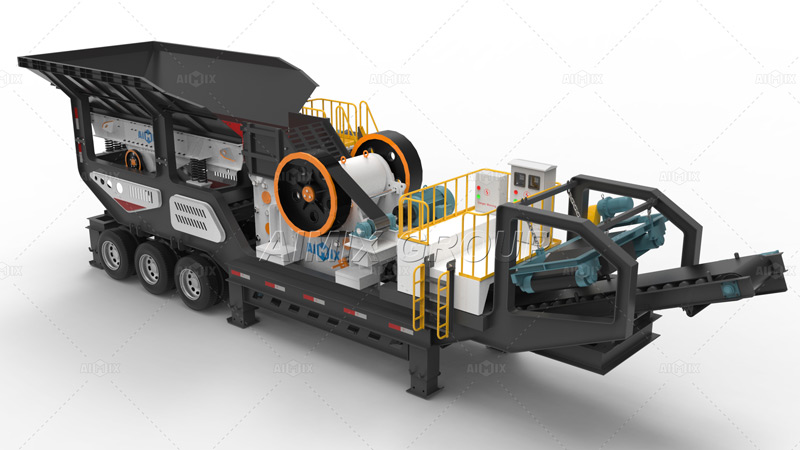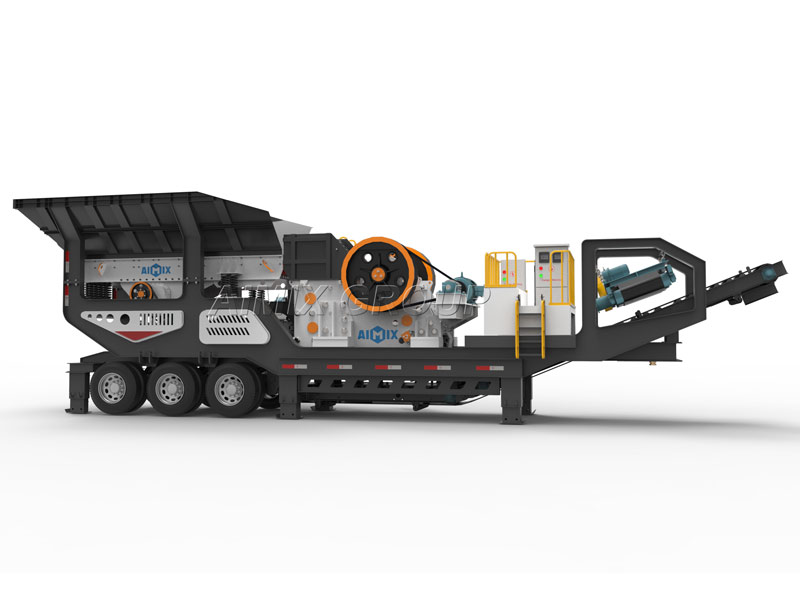What Raw Materials Are Aggregates Made Of?
Aggregates are essential materials in the construction, mining, and infrastructure industries. From the foundation of buildings to the surfacing of roads, aggregates provide strength, stability, and durability. But have you ever wondered what raw materials are used to produce these vital components? In the mining and aggregate industry, the origin of aggregates lies beneath the surface — quite literally. Various rocks and minerals are extracted, crushed, and sorted to meet the specifications required for construction and other industrial applications.
Let's explore the raw materials used in aggregate production, their characteristics, and the processes involved in turning natural stones into high-quality aggregates.

Understanding the Role of Aggregates in Construction
Aggregates make up 60–80% of concrete and about 90–95% of asphalt mixtures. They come in different sizes and textures, tailored to specific uses such as base layers, drainage systems, or concrete production. To ensure strength and longevity, aggregates must meet strict quality standards, which depend largely on the raw materials used and the crushing process.
Common Raw Materials Used in Aggregates
1. Limestone
Limestone is one of the most commonly used raw materials for aggregates. It's abundant, easy to extract, and has excellent binding properties. Limestone aggregates are ideal for road bases, concrete, and asphalt. Due to its relatively soft nature, limestone is easy to process using an aggregate crusher plant(planta chancadora de agregados), making it cost-effective and highly versatile.
2. Granite
Granite is a hard and durable igneous rock that produces high-strength aggregates. It is often used in heavy-duty construction projects such as highways and railroads. The hardness of granite requires powerful crushing equipment, often involving multiple stages in a stone crusher plant to achieve the desired particle size.
3. Basalt
Another igneous rock, basalt is rich in iron and magnesium. It provides excellent mechanical strength and is commonly used in high-load applications. Its dark color and resistance to wear make basalt aggregates suitable for asphalt surfaces, airport runways, and coastal defense works.
4. Sandstone
Sandstone is formed from compacted sand particles and is used where a lighter and more porous aggregate is required. While not as strong as granite or basalt, it is suitable for use in non-load-bearing applications or decorative elements.
5. Gravel and River Rock
Natural gravel and river rock are popular due to their smooth surfaces and natural aesthetics. They are often used in landscaping, drainage systems, and concrete mixes. These materials usually require minimal processing and can be easily handled by mobile stone crusher equipment on-site, especially in remote or uneven terrains.
6. Recycled Concrete
Crushed concrete from demolished structures is also a widely accepted source of aggregates. This eco-friendly option reduces the demand for natural raw materials while supporting sustainable construction practices. With a reliable aggregate crusher plant, old concrete can be processed into usable aggregate that meets industry standards.
How Raw Materials Are Processed into Aggregates
Once the raw material is selected, it goes through several processing stages:
-
Extraction – Materials are mined from quarries, riverbeds, or recycled sources.
-
Crushing – Large rocks are broken down using crushing equipment such as jaw crushers, impact crushers, or cone crushers.
-
Screening – Crushed materials are sorted by size using vibrating screens.
-
Washing – Removes dust and unwanted particles.
-
Stockpiling – The final aggregates are stored according to size and type, ready for transportation.
Modern stone crusher plant(trituradora de piedra movil) setups are designed to handle these processes efficiently, ensuring consistent quality across all batches.
Mobile Solutions for Aggregate Production
In recent years, mobile stone crusher technology has revolutionized the aggregate industry. These portable machines allow companies to crush materials directly at the site, reducing transportation costs and improving efficiency. This is especially beneficial in large infrastructure projects, remote areas, or temporary mining sites.
A mobile stone crusher can perform multiple crushing stages, from primary to tertiary, and can be customized to suit the specific type of raw material being processed. It is a flexible and cost-effective solution for modern aggregate production.

Final Thoughts
Aggregates are more than just crushed stones — they are the foundation of modern construction. The quality of the final product depends heavily on the raw materials used and the efficiency of the crushing and screening processes. Whether sourced from natural rock formations like granite and limestone, or recycled from concrete debris, these materials undergo rigorous processing through advanced aggregate crusher plant and stone crusher plant(planta trituradora de piedra) setups.
By understanding the raw materials and the technologies used, companies can ensure that their aggregate production meets the growing demand for quality, sustainability, and efficiency in the construction and mining sectors.
